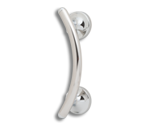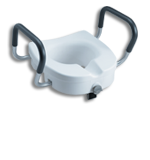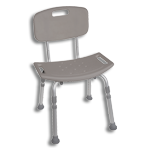Bathroom & Shower Safety
Residents who have mobility problems and are at risk for falling may need extra care around the bathroom and shower. According to the National Safety Council, the bathroom is often the most dangerous room. The smooth surfaces and wet conditions pose particular hazards in long-term care or assisted living facilities. Falls in the bathroom are the most common cause of non-fatal injuries, and conditions there can generate a variety of F-Tag citations for your facility. Proper bathroom safety is essential to maintain compliance and avoid accidents.
Bathroom & Shower Safety Supplies
Grab Bars
Grab bars are vital in a resident care facility. They offer support for residents transferring on and off the toilet and in and out of the shower. Conditions can get slippery in the bathroom and dual-purpose grab bars can help prevent falls. Shop Grab Bars
Lighting
The bathroom should be well-lit, even after dark. A nightlight can help residents who are up at night using the bathroom. Shop Lighting
Raised Toilet Seats and Commode Chairs
Sitting down and rising from a toilet can be a challenge for residents. The low height of most toilets combined with balance or mobility issues make bathroom visits a risky event. Elevated or raised toilet seats provide extra support for residents who are unable to use a regular-height toilet. Available in 300 pound capacity, elevated seats attach to existing toilets and come with or without extra support arms.
Also available are commode chairs for those patients who have trouble walking to the bathroom. Commodes are available in various weight capacities, and include splash shields, durable snap-on seats, and strong support frames. Shop Toilet Safety
Shower Seats
It's essential that patients have non-slip, ADA compliant shower seats and benches for safety. Non-slip shower chairs allow residents with limited mobility or balance issues, a safe, more relaxed bathing experience. Shop Shower Seats




